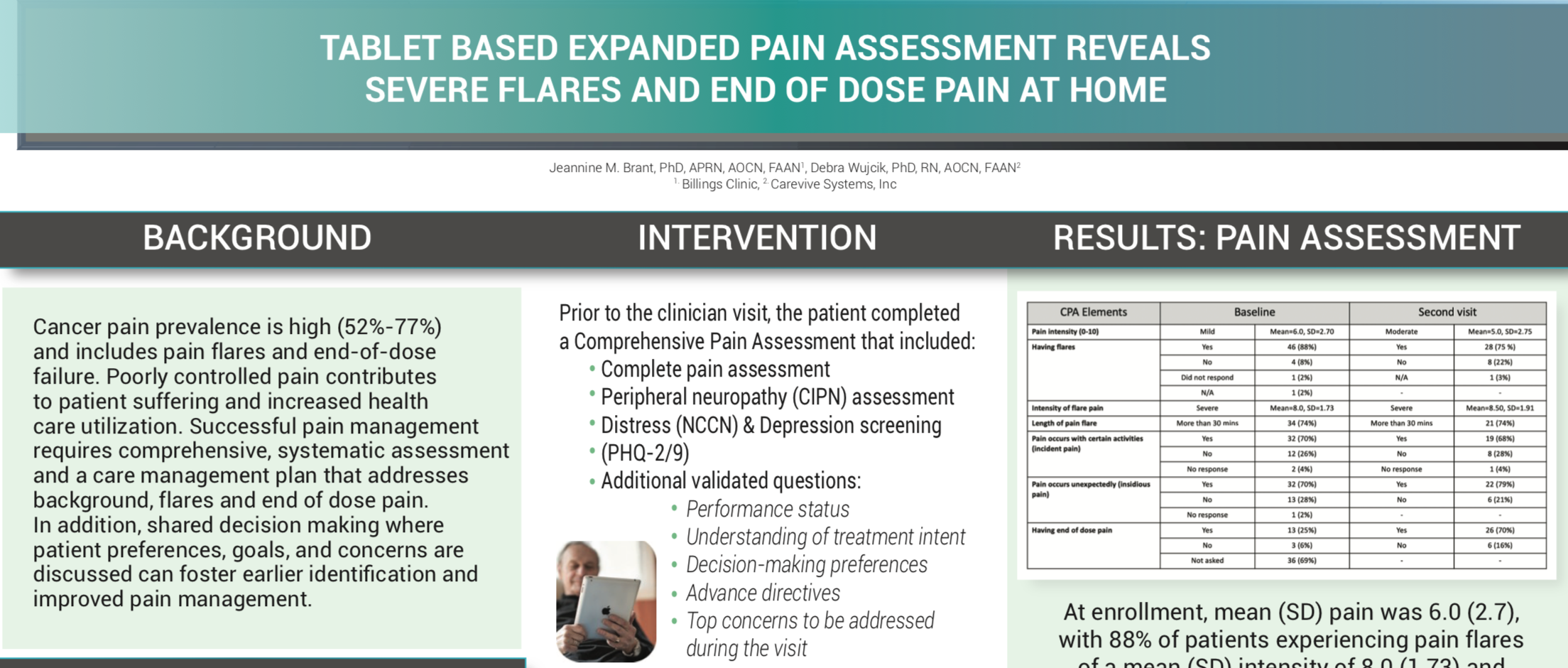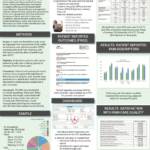
Carevive’s Debra Wujcik, PhD, RN, AOCN, FAAN along with Jeannine M. Brant, PhD, AOCN, FAAN from Billings Clinic presented a poster at the 2019 MASCC/ISOO Annual Meeting titled “Tablet-Based Expanded Pain Assessment Reveals Severe Flares and End of Dose Pain at Home“.
Background
Cancer pain prevalence is high (52%-77%) and includes pain flares and end-of-dose failure. Poorly controlled pain contributes to patient suffering and increased health care utilization. Successful pain management requires comprehensive, systematic assessment and a care management plan that addresses background, flares, and end of dose pain. In addition, shared decision making where patient preferences, goals, and concerns are discussed can foster earlier identification and improved pain management.
Methods
Design
A multi-site feasibility study using an Expanded Pain Assessment (EPA) within an electronic care planning system (CPS), combining the Brief Pain Inventory with drill-down questions about breakthrough pain (BTP).
Eligibility
Ambulatory patients with cancer presenting with pain or taking opioids to manage chronic cancer pain.
Procedures
Patients with advanced cancer at three sites completed the tablet-based EPA prior to the clinician visit. Results were presented on a dashboard, and the provider and patient collaboratively established a pain care plan.
Instrument
The EPA was developed to include questions about pain flares (intensity and length, associated with activity or arise at any time and end of dose pain. Effectiveness of pain management planning was measured with the Pain Care Quality Survey (PCQS).
Conclusion
Comprehensive pain assessment with an electronic expanded pain assessment revealed important details that were incorporated into the care management plan. Patients were satisfied with their interactions with the care team and with the pain management plan. Since patients were experiencing severe flares and end of dose pain at home, strategies to engage patients between visits should be evaluated.




